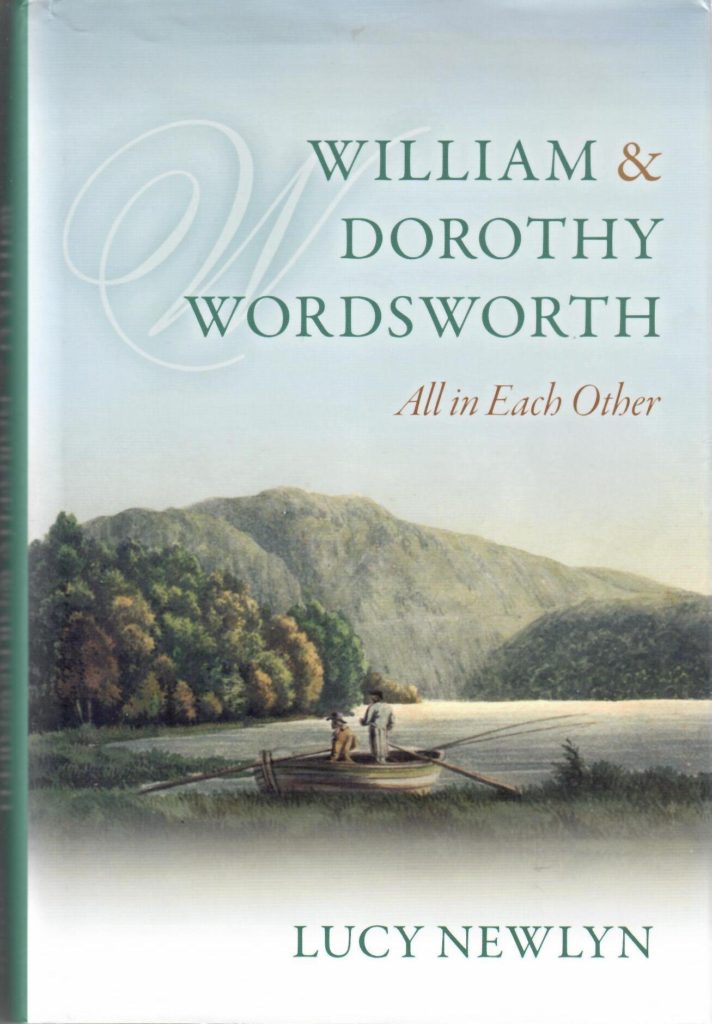

The first time I heard Dorothy Wordsworth’s name was in 1984, when poet Amy Clampitt did a residency at McNeese State University where I was working on an M.F.A. in Poetry. Clampitt had traveled frequently to the Lake District of England and she mentioned then that she was immersed in reading Dorothy Wordsworth’s journals. Before her death in 1994, Clampitt wrote a play, Mad with Joy, about the sharing of a household of William and Dorothy Wordsworth and Samuel Taylor Coleridge. (I learned that from a lucid and lovely review in 1998 by critic Helen Vendler of Clampitt’s posthumously published Collected Poems (Faber, 1998) called “All Her Nomads” published in the London Review of Books. The review is thoughtful and illuminating. The Collected Poems, which I spent a whole season with, reading every poem allowed, a few winters back, is splendid, from the forward by Mary Jo Salter to the last note. Even if you have, as I do, the individual volumes, the heft and achievement of the omnibus volume is indispensable, in my view!)
It was the tug of Amy Clampitt’s interest in Dorothy Wordsworth that convinced me, nearly two decades after Clampitt’s death, to invest in Lucy Newlyn’s literary biography, William & Dorothy Wordsworth: All in Each Other (Oxford University Press, 2013). Both siblings suffered throughout their lives from feelings of both homelessness and homesickness. Newlyn’s sensitive and scholarly exploration not only of the Wordsworths’ biographical details and literacy achievements, but of the intertwining ideas of nostalgia and homesickness (from the 18th to 21st centuries) made this book riveting reading for me. It also served as the catalyst for the poem below, which I wrote in 2014 and included in the first section of my first collection, Still Life with Poppies: Elegies. (I was thinking especially of the descriptions of their house at Rydal Mount, and still hope to one day visit it myself.) I think this is the only time that reading a biography directly sparked a poem of my own.
Homesick for Dorothy and William Wordsworth Lonely bones, an old house, long abandoned, just beyond the curve of that rushing stream. No one now can know the life it nourished: its hearth stone cold, scoured clean even of ash; its cupboards bare; its sink dry as grave dust. As tombs are little houses for the dead, this suite of rooms once alive, the machine and carapace of loving family life, stands, silent, in its copse of fragrant trees, memorial to what once moved within: breath of sleeping children, flickering light, deep chill seeping past ice-ferned window panes. And now grey dust reigns down a gentle night. Do you hear? Keening beneath autumn rains. Leslie Schultz from Still Life with Poppies: Elegies (Kelsay Books, 2016)
The Wordsworths’ shared interests in literature, in natural beauty and what we now call environmentalism, and in rooted family life (often a lively household of Dorothy, William and his wife, Mary Hutchinson Wordsworth, and their children, and sometimes others) fascinates me. I was particularly interested in the way these siblings complemented, supported, and contributed to each other’s thinking and writing. In looking this biography over so that I could share it here, I think I am due for a second reading of it. Perhaps this summer!

Regarding the Poem “Icy Botany”:
Some years ago, I was alerted by friends to a rare phenomenon on the Cannon River. I wrote about my first and only sighting of “lily pad ice” then, and you can read about it here and see more of the pictures I took that day. I have kept thinking about those icy formations, and today, when everything in the garden is beginning to bloom and move (more on the garden in tomorrow’s post) I decided the time was right to try to render that experience in a poem.
Until tomorrow,
LESLIE

They sound so congenial, not always the case with siblings. (We lucked out, too, I think!)
Interesting post Leslie. If you’d told me about the Wordsworth sibling dynamic I’d forgotten it and am happy to be reminded of it. Happy for another book to be read.